
100 Plus: How the Coming Age of Longevity Will Change Everything, From Careers and Relationships to Family And
by
Sonia Arrison
Published 22 Aug 2011
Dorff, “Becoming Yet More Like God: A Jewish Perspective on Radical Life Extension,” in Religion and the Implications of Radical Life Extension, ed. Derek F. Maher and Calvin Mercer (New York: Palgrave Macmillan, 2009), 69. 6 Sherry E. Fohr, “Karma, Austerity, and Time Cycles: Jainism and Radical Life Extension,” in Religion and the Implications of Radical Life Extension, ed. Maher and Mercer, 82. Jainism is an Indian religion that teaches nonviolence and austerity. 7 Ronald Cole-Turner, “Extreme Longevity Research: A Progressive Protestant Perspective,” in Religion and the Implications of Radical Life Extension, ed. Maher and Mercer, 59. 8 Ibid., 60. 9 Phone interview with Lawrence Iannaccone, April 1, 2010. 10 Peter Berger, “Epistemological Modesty: An Interview with Peter Berger,” Christian Century, October 29, 1997, 972–978. 11 Carl Sagan, The Varieties of Scientific Experience: A Personal View of the Search for God, ed.
…
Cameron and Amy Michelle DeBaets, “Be Careful What You Wish For? Radical Life Extension Coram De: A Reformed Protestant Perspective,” in Religion and the Implications of Radical Life Extension, ed. Maher and Mercer, 44. 58 Ghulam Ahmed Parvez, cited in Aisha Y. Musa, “A Thousand Years, Less Fifty: Toward a Quranic View of Extreme Longevity,” in Religion and the Implications of Radical Life Extension, ed. Maher and Mercer, 127–128. 59 Musa, “A Thousand Years, Less Fifty,” 128. 60 Livia Kohn, “Told You So: Extreme Longevity and Daoist Realization,” in Religion and the Implications of Radical Life Extension, ed. Maher and Mercer, 87. 61 Ibid., 95. 62 Ibid., 96. 63 Ibid. 64 Lawrence R.
…
Once the discussion hits that point, religion could be in trouble because a big part of its appeal is the promise of immortality in the afterlife. If individuals can achieve immortality here on earth, why bother with another realm? Scholars of religion have already started discussions about this quandary. In the seminal compilation on the topic, Religion and the Implications of Radical Life Extension, edited by religious studies professors Derek Maher and Calvin Mercer, Rabbi Elliot N. Dorff predicts that longer lives will make religious messages weaker. “The longer we think we have until we die,” Rabbi Dorff cautions, “the less likely it is that the reality of death will affect our lives.
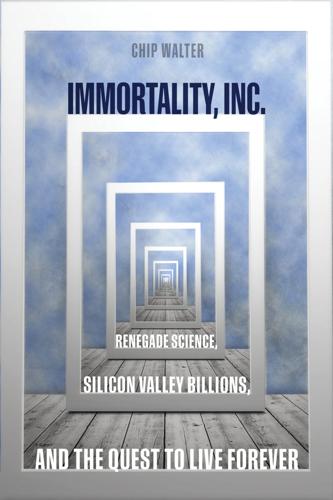
Immortality, Inc.
by
Chip Walter
Published 7 Jan 2020
Masci, David, and Funk, Carolyn. “Living to 120 and Beyond: Americans’ Views on Aging, Medical Advances and Radical Life Extension.” Pew Research Center, August 6, 2013. pewforum.org/2013/08/06/living-to-120-and-beyond-americans-views-on-aging-medical-advances-and-radical-life-extension. ———. “To Count Our Days: The Scientific and Ethical Dimensions of Radical Life Extension.” Pew Research Center, August 6, 2013. pewforum.org/2013/08/06/to-count-our-days-the-scientific-and-ethical-dimensions-of-radical-life-extension. McCracken, Harry, and Lev Grossman. “Google vs. Death: How CEO Larry Page Has Transformed the Search Giant Into a Factory for Moonshots.”
…
Graham, Megan Smith, and Rochelle Buffenstein. “Naked Mole-Rat Mortality Rates Defy Gompertzian Laws by Not Increasing With Age.” eLife 7 (2018): e31157. elifesciences.org/articles/31157. Shermer, Michael. “Radical Life-Extension Is Not Around the Corner-Can Science and Silicon Valley Defeat Death?” Scientific American, October 1, 2016. scientificamerican.com/article/radical-life-extension-is-not-around-the-corner. Sifferlin, Alexandra. “How Silicon Valley Is Trying to Hack Its Way Into a Longer Life.” Time, February 16, 2017. Simon, Stacy. “Cancer Statistics Report: Death Rate Down 23% in 21 Years.”
…
Maris knew it might seem a little out of the ordinary—well, maybe way out of the ordinary—but he hoped to get Levinson’s feedback. He wanted to create a start-up designed to cure aging—even death itself. Levinson had been aware, vaguely, of various efforts to extend life. He had heard of Ray Kurzweil’s prescriptions for radical life extension, had come across Aubrey de Grey’s work on abolishing aging here and there, and suspected the National Institute on Aging (NIA), Harvard, MIT, and other organizations of that ilk had likewise dabbled in the question. But this was a different beast entirely. Google was involved, and Google had a way of bending the fabric of culture and economics the way black holes bend light and gravity.

The Singularity Is Nearer: When We Merge with AI
by
Ray Kurzweil
Published 25 Jun 2024
Both our natural intuition and a backward-looking view of history suggest that the next twenty years of advances will be roughly like the last twenty, but this ignores the exponential nature of the process. Knowledge that radical life extension is close at hand is spreading, but most people—both doctors and patients—are still unaware of this grand transformation in our ability to reprogram our outdated biology. As mentioned earlier in this chapter, the 2030s will bring another health revolution, which my book on health (coauthored with Terry Grossman, MD) calls the third bridge to radical life extension: medical nanorobots. This intervention will vastly extend the immune system. Our natural immune system, which includes T cells that can intelligently destroy hostile microorganisms, is very effective for many types of pathogens—so much so that we would not live long without it.
…
The best way to avoid destructive conflict in the future is to continue the advance of our ethical ideals, which has already profoundly reduced violence in recent centuries and decades.[79] I do think we also need to take seriously the misguided and increasingly strident Luddite voices that advocate broad relinquishment of technological progress to avoid the genuine dangers of genetics, nanotechnology, and robotics (GNR).[80] Delays in overcoming human suffering are still of great consequence—for example, the worsening of famine in Africa resulting from opposition to any food aid that might contain GMOs (genetically modified organisms).[81] With technologies now beginning to modify our bodies and brains, another type of opposition to progress has emerged in the form of “fundamentalist humanism”: opposition to any change in the nature of what it means to be human.[82] This would include modifying our genes and our protein folding, and taking other steps toward radical life extension. This opposition will ultimately fail, however, because the demand for therapies that can overcome the pain, disease, and short life spans inherent in our version 1.0 bodies will ultimately prove irresistible. When people are presented with the prospect of radical life extension, two objections are quickly raised. The first is the probability of running out of material resources to support an expanding biological population.
…
For example, we have nearly ten thousand times the sunlight we need to theoretically meet all of our current energy needs.[83] The second objection to radical life extension is that we will become profoundly bored doing the same things over and over again for centuries. But in the 2020s we will have virtual and augmented reality delivered in very compact external devices, and in the 2030s we will have VR and AR connected directly to our nervous systems by nanobots feeding signals to our senses. We will thereby have radical life expansion in addition to radical life extension. We will inhabit vast virtual and augmented realities limited only by our imagination—which itself will be expanded.
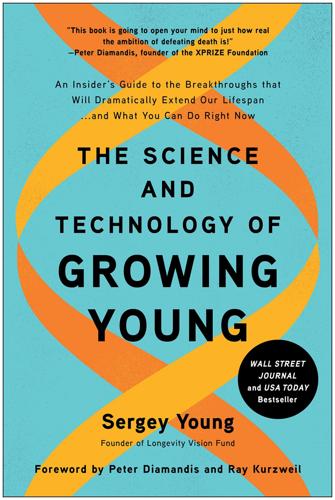
The Science and Technology of Growing Young: An Insider's Guide to the Breakthroughs That Will Dramatically Extend Our Lifespan . . . And What You Can Do Right Now
by
Sergey Young
Published 23 Aug 2021
But for the most part, The Science and Technology of Growing Young is told through the stories of the amazing people and ideas I have discovered in my quest to help one billion people live to see one hundred. I am convinced that the future will hold some form of extreme longevity. That may come in the form of radical life extension to 150 or 200 years. That may come in the form of “technical immortality,” where a new definition of life is preserved infinitely. It may even be genuine biological immortality, where human beings will have the choice to continually extend their lives or not. But I believe that radical life extension will happen, and relatively soon. But before we jump into that exciting future, let’s take a closer look at what we really mean by longevity.
…
t=2257. 5Rodale Books, “New book released—Fantastic Voyage: Live Long Enough to Live Forever,” Kurzweil Web Page, last modified November 17, 2004, https://www.kurzweilai.net/fantastic-voyagebook-announcement. Chapter 3 1Joseph Liu, “Living to 120 and Beyond: Americans’ Views on Aging, Medical Advances and Radical Life Extension,” Pew Research Center Web Page, August 6, 2013, https://www.pewforum.org/2013/08/06/living-to-120-and-beyond-americans-views-on-aging-medical-advances-and-radical-life-extension/. 2Gallagher, James. “Fertility Rate: ‘Jaw-Dropping’ Global Crash in Children Being Born.” BBC News, BBC, 14 July 2020, www.bbc.com/news/health-53409521. Chapter 4 1Rayner, Claire. “Alex Comfort.” The Guardian, Guardian News and Media, 28 Mar. 2000, www.theguardian.com/news/2000/mar/28/guardianobituaries. 2Aubrey de Grey, Meeting with author in San Francisco in November 26, 2019. 3Sinclair, David A., and Matthew D.
…
I understand why that is a pretty hard concept for some to swallow. Our personal experience of life is tightly pressed between the mortal bookends of birth and death—death and mortality as we know them literally define our existence. But the truth is that few longevity scientists of note dismiss the concept of radical life extension out of hand. Logically and scientifically, the theory of longevity escape velocity has merit. To understand the exponential medical and scientific breakthroughs we’re on the cusp of, just consider the COVID-19 vaccine in the context of history: it took two hundred years from the first smallpox outbreak in 1595 before a vaccine was invented to prevent the disease.
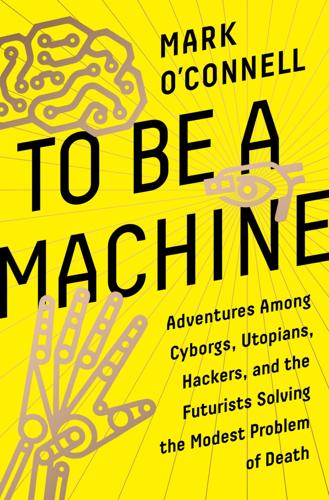
To Be a Machine: Adventures Among Cyborgs, Utopians, Hackers, and the Futurists Solving the Modest Problem of Death
by
Mark O'Connell
Published 28 Feb 2017
The more I learned about transhumanism, the more I came to see that, for all its apparent extremity and strangeness, it was nonetheless exerting certain formative pressures on the culture of Silicon Valley, and thereby the broader cultural imagination of technology. Transhumanism’s influence seemed perceptible in the fanatical dedication of many tech entrepreneurs to the ideal of radical life extension—in the PayPal cofounder and Facebook investor Peter Thiel’s funding of various life extension projects, for instance, and in Google’s establishment of its biotech subsidiary Calico, aimed at generating solutions to the problem of human aging. And the movement’s influence was perceptible, too, in Elon Musk’s and Bill Gates’s and Stephen Hawking’s increasingly vehement warnings about the prospect of our species’ annihilation by an artificial superintelligence, not to mention in Google’s instatement of Ray Kurzweil, the high priest of the Technological Singularity, as its director of engineering.
…
Jason Xu, the Silicon Valley community organizer for Terasem, was setting up for a little gathering in a room off the main hall. I had read about Terasem, and it seemed to be the closest that transhumanism had come to generating a genuine religious offshoot. It was a faith, or “movement,” based in the idea of “personal cyberconsciousness,” in the spiritual dimension of things like mind uploading and radical life extension. I had read about Jason Xu, too—about a protest he’d helped to organize recently, the first-ever transhumanist street action in the U.S. Outside Google’s headquarters in Mountain View, he and a small group of fellow transhumanists had stood with placards reading “IMMORTALITY NOW” and “GOOGLE, PLEASE SOLVE DEATH.”
…
Aubrey was, as it happened, quite gifted in the necessary arts of persuasion; early in our conversation, he caught a whiff of my own skepticism and proceeded ruthlessly, if not entirely effectively, to interrogate and undermine its underlying assumptions. He first set about arguing me out of any ambivalence about the desirability of eradicating human mortality. People’s standard reasons for rejecting the principle of radical life extension—that it would somehow rob us of our humanity, that life was given meaning by its finitude, that living indefinitely would actually be hellish—were “embarrassingly infantile and idiotic” rationalizations. Death, he said, was our captor, our tormentor; and we dealt with this situation through a kind of Stockholm Syndrome.

Death Glitch: How Techno-Solutionism Fails Us in This Life and Beyond
by
Tamara Kneese
Published 14 Aug 2023
In her vision of a radical Mormon transhumanist afterlife, people are joined to many others of any gender for all of eternity, not just to one heterosexually defined spouse. Mormon transhumanism is still centered on reproduction and kinship. Transhumanism proper is notoriously unfriendly to sexual reproduction in that radical life extension or immortality makes it unnecessary for people to procreate at all. As the media theorist N. Katherine Hayles has described in her critiques of the mind-body dualism often found in transhumanist thought, roboticists like Hans Moravec celebrate the idea of “mind children” over flesh-and-blood progeny.
…
This is why it is so hard to take the future personally, especially the longer future, because that world is suffused with our absence. Its very life emphasizes our hapless death.”82 Brand acknowledges that some people are living longer, referring to Bruce Sterling’s science fiction work Holy Fire, which examines the possibilities afforded by radical life extension. For Brand, life extension also leads to greater responsibility, as increasing life spans will change the structure of the world. That responsibility, however, is based on sexual reproduction and the continuation of kinship lines, not on speculative technologies like mind uploading. His investment is in monumental smart objects like the Clock of the Long Now, the GitHub open-source code vault, and the digitized Manual for Civilization.
…
What does it mean to get back to normal in the face of mass death?3 The pandemic is a business opportunity for death entrepreneurs, but it has also catalyzed new organizing movements through and around platforms. There is an immense gulf between the sanitized digital afterlives imagined by technologists, who build posthumous chatbots or other radical life-extension technologies, and the people on the ground whose lives and deaths are subject to the machinations of platform necropolitics. In this conclusion, I juxtapose the failed experiments of futurist entrepreneurs, who are attempting to remake life and death, with the organizing efforts of people who are embracing mortality by using platforms to position death care as a human right.

The Singularity Is Near: When Humans Transcend Biology
by
Ray Kurzweil
Published 14 Jul 2005
Having done that, we have the ability to find the ideas to confront and resolve each such problem . ·We can apply the enormous leverage provided by the acceleration of technology. A notable example is achieving radical life extension through "a bridge to a bridge to a bridge" (applying today's knowledge as a bridge to biotechnology, which in turn will bridge us to the era of nanotechnology).4 This offers a way to live indefinitely now, even though we don't yet have all the knowledge necessary for radical life extension. In other words we don't have to solve every problem today. We can anticipate the capability of technologies that are coming—in five years or ten years or twenty—and work these into our plans.
…
We have seen comparable mistakes during earlier paradigm shifts—for example, during the early railroad era (1830s), when the equivalent of the Internet boom and bust led to a frenzy of railroad expansion. Another error that prognosticators make is to consider the transformations that will result from a single trend in to day's world as if nothing else will change. A good example is the concern that radical life extension will result in overpopulation and the exhaustion of limited material resources to sustain human life, which ignores comparably radical wealth creation from nanotechnology and strong AI. For example, nanotechnology-based manufacturing devices in the 2020s will be capable of creating almost any physical product from inexpensive raw materials and information.
…
These will usher in what I referred to earlier as Epoch Five, the beginning of the Singularity. We are in the early stages of the "G" revolution today. By understanding the information processes underlying life, we are starting to learn to reprogram our biology to achieve the virtual elimination of disease, dramatic expansion of human potential, and radical life extension. Hans Moravec points out, however, that no matter how successfully we fine-tune our DNA-based biology, humans will remain "second-class robots," meaning that biology will never be able to match what we will be able to engineer once we fully understand biology's principles of operation.2 The "N" revolution will enable us to redesign and rebuild—molecule by molecule—our bodies and brains and the world with which we interact, going far beyond the limitations of biology.
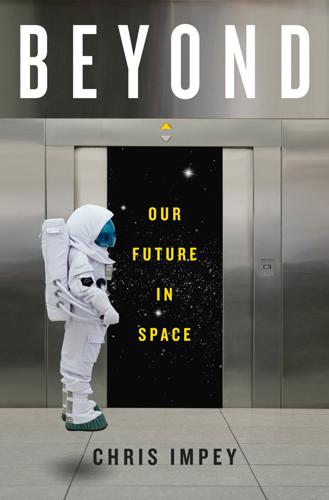
Beyond: Our Future in Space
by
Chris Impey
Published 12 Apr 2015
Another variant of the singularity takes current efforts to fight disease and projects them into radical life extension, where technology helps us overcome all our mental and physical limitations. Ray Kurzweil has been the most eloquent proponent of this future. He’s a founder of the Singularity University, where the tech world’s movers and shakers pay tens of thousands of dollars for short courses on the cutting edge in AI and nanotechnology. Critics have mocked the idea of the singularity as the “rapture of the nerds,” and they’ve noted that only the wealthy will benefit from radical-life-extension technology. The goal of researchers like Kurzweil is simple: immortality.
…
By the age of fourteen, his mother had died and he had given up formal schooling. A reclusive teenager, he moved to Moscow so he could spend long hours at a local library, where he studied physics and astronomy. At the library he was influenced by Nikolai Fyodorov, a futurist who advocated radical life extension and immortality and who thought that the future of humanity lay in space. He also stumbled on the works of Jules Verne and became inspired by Verne’s tales of space travel. Tsiolkovsky’s family recognized his talent but worried that he was studying obsessively and forgetting to eat. When he was nineteen, his father brought him back home and helped him get a teaching credential so he could earn a living.
…
Once they learn how to miniaturize them, biohackers will implant themselves with medical sensors that can talk to a smartphone and a device that will let fingers “see” by echolocation.31 This goes beyond sensory extension to the creation of entirely new senses. The philosophical movement that forms an umbrella for cybernetics and cyborgs is called transhumanism. Transhumanism is a worldwide cultural and intellectual movement that seeks to use technology to improve the human condition. Radical life extension is one aspect, as is the enhancement of physical and mental capabilities. Two prominent transhumanists are Nick Bostrom, a University of Oxford philosopher who has assessed various risks to the long-term survival of humanity, and Ray Kurzweil, the engineer and inventor who popularized the idea of the singularity, a time in the not-too-distant future when technology will enable us to transcend our physical limitations.
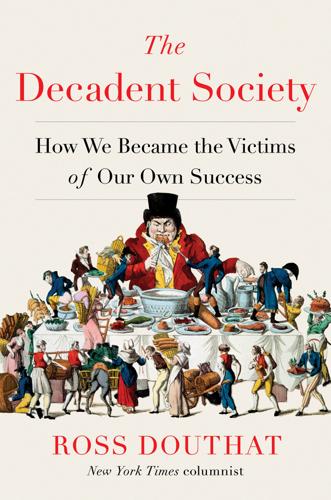
The Decadent Society: How We Became the Victims of Our Own Success
by
Ross Douthat
Published 25 Feb 2020
Meanwhile, we also hype the changes that are supposedly just around the corner: the alternative energy revolution that’s always poised for takeoff; the genetic engineering breakthrough that will deliver designer babies any day now; the dramatic artificial intelligence leap forward that will either usher in utopia or end with our extermination at the hands of some misanthropic Skynet; the radical life-extension hack that will either add fifty years to our lifespans or enable us to upload ourselves into virtual immortality; the “new study” that offers hope for curing Alzheimer’s or Parkinson’s or cancer; the robots that are supposedly about to take over all our jobs. Even the stars are making a comeback: I’m writing this paragraph with a copy of Bloomberg BusinessWeek beside me that hypes the new Silicon Valley–funded space race.
…
But a society being fundamentally transformed by automation would have sharp productivity growth, of the kind we used to have and briefly enjoyed in the Internet’s first flower, rather than the productivity stagnation afflicting both the United States and Europe. For all the bright talk about radical life extension, too, recent medical progress has come primarily in the fight against rare conditions that affect small populations, rather than big killers such as cancer, heart disease, and Alzheimer’s. Obviously, if you’re a parent of a child with cystic fibrosis, for which a long-awaited treatment just arrived, or a mother whose baby was just saved from a congenital defect by surgery in the womb, or an Iraq War veteran with a miraculous-seeming prosthetic, the progress that we have experienced is amazing, and the fields that generate them are obviously not decadent.
…
Maybe we have simply been in a kind of bottleneck for the last few generations, achieving important scientific breakthroughs that don’t (yet) translate into society-altering changes. At a certain point, we’ll clear the bottleneck, and it will become clear that our era was a necessary prelude to renewed acceleration—eventually giving us self-driving cars courtesy of a finally profitable Uber, a Mars colony courtesy of the Elon Musk–Jeff Bezos space race, and radical life extension courtesy of Google’s longevity lab or some other zillionaire who can’t imagine shuffling off this mortal coil. All of this could happen on a scale that would be world altering without having the truly utopian scenarios come to pass. Terraforming Mars and becoming a multiplanetary species may be unattainable for now—but just going to Mars would be a bigger leap for mankind than anything we’ve accomplished since Neil Armstrong.

Artificial You: AI and the Future of Your Mind
by
Susan Schneider
Published 1 Oct 2019
I first learned of transhumanism while an undergraduate at the University of California at Berkeley, when I joined the Extropians, an early transhumanist group. After poring through my boyfriend’s science fiction collection and reading the Extopian listserv, I was enthralled by the transhumanist vision of a technotopia on Earth. It is still my hope that emerging technologies will provide us with radical life extension, help end resource scarcity and disease, and even enhance our mental lives, should we wish to enhance. A FEW WORDS OF WARNING The challenge is how to get there from here in the face of radical uncertainty. No book written today could accurately predict the contours of mind-design space, and the underlying philosophical mysteries may not diminish as our scientific knowledge and technological prowess increase.
…
Philosophers call the characteristics that a thing must have as long as it exists “essential properties.” Now let’s reconsider the transhumanist’s trajectory for enhancement. It is portrayed as a form of personal development. However, even if it brings such goodies as superhuman intelligence and radical life extension, it must not involve the elimination of any of your essential properties. What might your essential properties be? Think of yourself in first grade. What properties have persisted that seem somehow important to your still being one and the same person? Notice that the cells in your body have now changed, and your brain structure and function have altered dramatically.
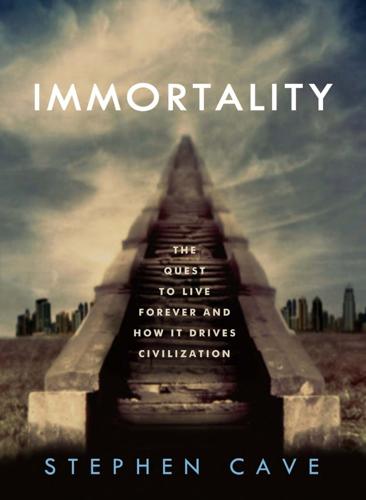
Immortality: The Quest to Live Forever and How It Drives Civilization
by
Stephen Cave
Published 2 Apr 2012
Another enthusiastic and readable immortalist is Ray Kurzweil, as reflected in his many books and articles on the subject, most notably Fantastic Voyage: Living Long Enough to Live Forever (with Terry Grossman, Rodale, 2004), Transcend: Nine Steps to Living Well Forever (also with Terry Grossman, Rodale, 2009) and The Singularity Is Near: When Humans Transcend Biology (Viking, 2005). The Immortality Institute, an organization dedicated to promoting radical life extension, has also published a collection of articles on the science and philosophy of the immortalists (including by Kurzweil and de Grey) called The Scientific Conquest of Death: Essays on Infinite Lifespans (Libros en Red, 2004). At the time this book went to print, this collection was also available to download for free from imminst.org/book. A philosophical defense of radical life extension is offered by the work of John Harris, for example in Enhancing Evolution: The Ethical Case for Making People Better (Princeton University Press, 2007), whereas those altogether opposed to such attempts are well represented by Francis Fukuyama in his book Our Posthuman Future: Consequences of the Biotechnology Revolution (Profile Books, 2002).
…
Bryan Appleyard’s aforementioned How to Live Forever or Die Trying and Jonathan Weiner’s Long for This World: The Strange Science of Immortality (HarperCollins, 2010) both give good (somewhat skeptical) layman’s accounts of the modern life-extension movement’s aims and leading personalities. The demographer who calculated that curing cancer would add only three years to our lives was S. Jay Olshansky, and the pessimistic view of the possibility of radical life extension can be found in his book (with Bruce A. Carnes) The Quest for Immortality: Science at the Frontiers of Aging (W. W. Norton, 2001). An excellent overview of the science of life, death, aging and immortality can be found in The Living End by the gerontologist Guy Brown (Palgrave Macmillan, 2007).
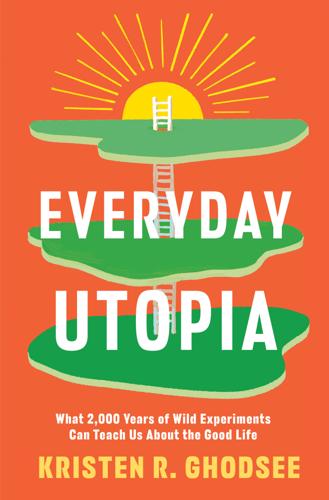
Everyday Utopia: What 2,000 Years of Wild Experiments Can Teach Us About the Good Life
by
Kristen R. Ghodsee
Published 16 May 2023
In academia, blue sky thinking underpins the discipline of geoengineering—scientists who hope to hack the earth’s weather systems in order to prevent the deleterious effects of climate change.17 The Cambridge University Center for Climate Repair suggests ocean greening, recycling CO2, refreezing the polar ice caps, and spraying aerosols of sulphate particles into the stratosphere to prevent solar radiation from reaching the planet.18 In Silicon Valley, a new breed of extreme dreamers, such as the Coalition for Radical Life Extension, is experimenting with ways to achieve human immortality.19 And those who study artificial life (in its hard, soft, and wet forms) push the boundaries of their imaginations to understand how sentience might evolve from complex systems.20 In the technology sector, entrepreneurs reap rewards when they “move fast and break things,” no matter what the costs to society as a whole.
…
More Scientists Now Say It Must Be an Option,” YaleEnviroment360, May 29, 2019, https://www.e360.yale.edu/features/geoengineer-the-planet-more-scientists-now-say-it-must-be-an-option; Pallab Ghosh, “Climate Change: Scientists Test Radical Ways to Fix Earth’s Climate,” BBC News, May 10, 2018, https://www.bbc.com/news/science-environment-48069663. 19 See the website for the Coalition for the Radical Life Extension: https://www.rlecoalition.com/about. 20 See the website for the International Society for Artificial Life: https://www.alife.org. 21 Maddy Savage, “Why Do Women Still Change Their Names?” BBC, September 23, 2020, https://www.bbc.com/worklife/article/20200921-why-do-women-still-change-their-names. 22 Lucy Robinson, “Whose Last Name Should You Give Your Baby?”
…
abortion, 94, 95, 152, 213 Abundance (Diamandis), 14 academia, academic studies, 37, 69–70 blue sky thinking and, 16 farming taught alongside, 121–22, 126–27 gender pay gap in, 20–21 valued above manual labor, 118, 121 Acts 2, 142, 154 Acts 4, 142 adoption, 221, 222–23, 224 Agriculture Department, US, 71 Albigensians, 142, 143 alloparents, alloparenting, 30, 181, 221, 222, 229 among nonhuman primates, 182–83 nuclear-family households as deterrent to, 185, 218, 226–27 state-funded, 213 All the Single Ladies (Traister), 197 Amazon, Indigenous tribes of, 186 Amazon (company), 67 Amazons (Greek mythology), 2, 26, 233 American Revolution, 144 Amish America website, 154 Anabaptists, 144, 153–54, 254 anarchists, anarchism, 8, 150–52 private property and, 140, 145 see also Kropotkin, Peter; Proudhon, Pierre-Joseph Anarchy, State, and Utopia (Nozick), 149 Ancient Society (Morgan), 152 Andover Theological Seminary, 80 Animal Farm (Orwell), 243–44 Anna Karenina (Tolstoy), 201 Another Community, 162 Apartment List website, 51 Apologia per Galileo (Apology for Galileo) (Campanella), 7 Appel d’une femme au peuple sur l’affranchissement de la femme (Appeal of a Woman to the People on the Enfranchisement of Women) (Démar), 208–9 Apple, Think Different slogan of, 15 Aristophanes, 11, 204 Arnold, Brother, 154–55 Arthur, Chester, 192 artificial intelligence (AI), 14 artificial life, 16 Asexual Visibility and Education Network (AVEN), 224 Association for Library Service to Children, Newbery Medal of, 244 Atarashiki-mura community, 162 Athens, ancient: monogamy in, 189, 202 Peloponnesian War defeat of, 4, 76 property owners in, 139–40 wealth inheritance in, 188–89 see also Greece, ancient BabyCenter website, 18 Babyjahr (baby year), 95 Baden-Württemberg, Campus Galli in, 36–37 banks, 57, 147–48 Bastani, Aaron, 14 Baugruppen (building groups), 56–57, 62 Bebel, August, 91, 210, 211, 246 nuclear family rejected by, 211–12 as proponent of gay rights, 211, 216 Social Democratic Party founded by, 210 women as viewed by, 210–11 Becker, Gary S., 188 Beguines, beguinages, 32, 38–39 castigated as heretics, 39, 254 modern, 57 women’s autonomy in, 38 Belgrade, University of, 47 Benedictine monasteries, 35, 36 Benedict of Nursia, Saint, 35 Berlin, cohousing projects in, 56 Berlin Senate Department for Urban Development, 57 Bernard, George W., 36 Bernard, Zoë, 50 Bertelsmann Foundation, 73 besprizornye, bezprizorniki (unattended ones), 114–15 Betzig, Laura, 190 Bezos, Jeff, 67 Bible, 143 see also New Testament; Old Testament Bible communism, 141–42, 153–57, 166 bihon lifestyle, 216 birth control, 152, 186, 215 birth rates, decline of, 75, 152, 216, 236 BirthStrike, BirthStrikers, 25, 257 Bjerre, Britta, 54–55 Blair, Eric (George Orwell), 243–44 Bloch, Ernst, 238 militant optimism and, 234–35, 240 Blount, Elizabeth, 190 blue sky thinking, 15–17, 24, 108, 239 see also dreamers, dreaming; hope, hopefulness; imagination bofællesskab (Danish communal housing projects), 53–57 Bogdanov, Alexander, 9 Bogomils, Bogomil sect, 142–44, 253 celibacy practiced by, 142, 205, 258 women’s equality in, 142, 154 Bolsheviks, 46, 93–94, 179 Boo, Katherine, 177–78 Book of the City of Ladies, The (Pizan), 38 Boomers, home ownership among, 51 Bowles, Samuel, 105 Boyd, Hal, 178 Boyd, Robert, 195 Boym, Svetlana, 47 Braff, Danielle, 220 Brancolini, Fabio, 129 Braun, Lily, 91–92 Brave New World (Huxley), 241–44, 245, 250 Bregman, Rutger, 14, 260 British Palestine, kibbutzim in, 86 Brooks, David, 177–78 Bruderhof colonies, 156–57 Brunswick, Maine, Two Echo Cohousing in, 52–53, 53 Bucur, Maria, 216 Buddha, 35, 167 Buddhists, Buddhism, 35, 141, 162 celibacy practiced by, 204, 258 Bulgaria: public education in, 118–19 “Unity in Diversity” project in, 130 see also Bogomils, Bogomil sect Bulgarian Women’s Committee, 96 Bureau of Labor Statistics, US, 106 Burkart, Judith M., 180–81 Burkina Faso, polygamy in, 187 California, three-parent adoption in, 224 California, University of: at Davis, 180 at Santa Cruz, 29, 200 Callenbach, Ernest, 9, 12 Cambridge University Center for Climate Repair, 16 Campanella, Tommaso, 6–7, 7, 112–13, 130, 132 Campus Galli, 36–37 Canada: Hutterite communities in, 154 patrilineal naming conventions imposed on Indigenous peoples in, 19–20 Canadian Cohousing Network, 66 Canterbury College, 37 capitalist realism, 240 capitalists, capitalism, 167, 214, 246 condition of women’s lives under, 10 early industrial, 8–10 hereditary transfer of wealth in, 29–30, 33–34, 144–49, 168, 188–90, 207–8 nuclear family structure and, 247–49 private property and, 145 public schools and, 105–8 wealth accumulation as prime concern of, 141, 145–46, 167 Carolingian monasteries, 36–37 Çatalhöyük, 32–33, 34 Cathars: Catholic Church and, 143, 253–54, 258 celibacy practiced by, 205, 253–54 women considered equals by, 142–44, 154 Catherine of Aragon, 190 Catholic Inquisition, 13 Catholics, Catholic Church, 4, 37 Albigensian Crusade of, 143 Beguines castigated as heretics by, 39, 254 Cathars despised by, 143, 253–54, 258 celibacy practiced by priests and nuns in, 205, 258 divorce prohibited by, 190 godparents and, 222 Hutterites persecuted by, 154 monogamy enforced by, 190, 218 tithes collected by, 143 vast land holdings of, 143 celibates, celibacy, 205, 219 of Bogomils, 142, 205 of Cathars, 205, 253–54 as challenge to monogamy, 204–5 in monastic communities, 32, 35, 205 of Shakers, 154–55, 205 cenobites, cenobitic monasticism, 35–36, 38–39, 141 celibacy practiced by, 32, 35, 205 property held in common by, 35, 141 Centers for Disease Control, 74, 176 “Century of Women,” 216 Ceresco (Wisconsin Phalanx), 42 Chana, Ziona, thirty-nine wives and ninety-four children of, 187 Chernyshevsky, Nikolai, 8 childcare, 21, 262 as commodity vs. public good, 100 nonparental, 74 state-supported, 10, 72–73, 92–95, 96–101 universal, 75, 79, 99, 237 worldwide disparity in access to, 96 childcare, communal, 43, 75, 76, 80, 101, 163, 178, 228 benefit to mothers of, 21, 88, 91, 98 benefit to parents of, 10, 21, 75–76, 90 developmental benefit to children of, 86, 90–91, 97–99, 237 on kibbutzim, 87–88, 89–90 childcare, in nuclear families, 73–74, 100, 256 Covid-19 pandemic and, 218, 257 by unpaid mothers, 10, 20–21, 25, 31, 56, 59, 68, 73, 77, 94, 128, 160 child labor, 79 child-rearing, 14, 25, 177–78, 180, 217–18 alloparenting in, see alloparents, alloparenting disparity in access to, 96 multi-parenting in, 223–26 platonic parenting in, 223 as public service, 76 public support for, 10, 72 women’s careers in conflict with, 21, 70–75 child-rearing, collective, 17, 24, 221, 237, 258 alloparenting in, see alloparents, alloparenting children’s long-term development benefited by, 90–91, 97–99 in cohousing, 52–53, 60 as essential for women’s incorporation in the labor force, 91 in Godin’s Familistery, 43 in kibbutzim, 86–91 Kollontai’s vision for, 92–95 Marx and Engels on, 79–80 in Oneida community, 81–85, 95 state-supported, 93–95 child-rearing, in nuclear families: diminishing multigenerational support in, 74, 177 financial cost of, 71–76 by unpaid mothers, 10, 20–21, 25, 31, 56, 59, 73–74, 78, 94 children: carbon footprint of, 228 collective rearing as beneficial to, 86, 90–91, 97–99, 237 with DNA of three parents, 223 early developmental needs of, 74 early immunity as beneficial to, 98 fathers’ surnames taken by, 18 as historically owned and controlled by men, 22, 137, 249 in polyamorous families, 224–25 as public goods, 76 “Children Should Have One Hundred Parents” (Graae), 54 chimpanzees, 180, 182–83 China, 49, 162 alloparental relationships in, 222 polygyny outlawed in, 190 Chomsky, Noam, 250 Christians, Christianity, 167 “Bible communism” and, 141–42, 153–57 communal sects of, 35–36, 153–57 godparents and, 222 monastic tradition in, see monastics, monasticism nuclear family and, 218–19 “Perfectionism” doctrine of, 80, 87 Churchill, Winston, 86 Church of England, 190 Church of Jesus Christ of Latter-day Saints (Mormons), plural marriage practiced among, 191–92 Cigna US Loneliness Index, 31 Cistercians, 35 Cities of Ladies (Simons), 38 Città del Sole, La (The City of the Sun) (Campanella), 6, 112–13 civil rights movement, US, 9 Cleveland, Grover, 192–93 climate crisis, 13, 127, 257 Coalition for Radical Life Extension, 16 cohousing, 52–57, 59, 65–66, 250–51 all-female, 57–58 architecture and design of, 59–60 children raised in, 52–53, 60; see also child-rearing, collective conflict resolution in, 64 conflicts in, 63–67 division of housework in, 59–60, 167 economic advantages of, 59, 61–62, 67 environmental benefits of, 62, 67, 167 loneliness and isolation mitigated in, 63, 67 for seniors, 57–58, 71 Cohousing Association of America (CohoUS), 66 Cold War, 3, 9, 86, 123, 231 Coldwell, Will, 50 Colgate University, 47 co-living, 49–52, 250–51 colleges and universities: communal living at, 29, 66 as historically male spaces, 38 Colombia: civil war in, 58 matriarchal ecovillage in, 57–58 Common (company), 50 communal living, 17, 25, 136 co-living, 49–52, 250–51 on college campuses, 29 economic advantages of, 31, 59, 61–62, 67 environmental advantages of, 31, 32 shared responsibilities in, 32 social connections in, 31 see also cohousing; kibbutzniks, kibbutzim “commune,” as pejorative term, 161 #communelife, 251 communism, communists, 8, 145, 150–51 anarchism vs., 151–52 1898 collapse of, 235 “Communist Confession of Faith” (Engels), 79 Communist Manifesto, The (Marx and Engels), 79–80, 107, 167, 209, 245–46 communities, 14, 17, 32, 37, 74 agricultural, 153 intentional, see intentional communities Community Playthings, 157 compadres (co-parents), 222 compersion, 221 Condition of the Working Class in England, The (Engels), 79 Congress, US, 123, 158–59, 192 Conly, Sarah, 77 Connelly, Rachel, 99 Conquest of Bread, The (Kropotkin), 9 Constitution, US, 2 contraception, 152, 186, 215 convents, 32, 38–39 Cooper, Davina, 237, 240–41 cooperation, 24, 68, 100, 105, 112, 114, 126–27, 202, 207 competition valued above, 121–22, 126 in conflict resolution, 64 as innate human tendency, 9 as learned trait, 65 Copenhagen, University of, Royal Academy of Art and Architecture at, 58 Copernicus, 6 Corinthians, First Epistle to, 205 corporations, blue sky thinking and, 15–16 Council of Vienne (1311), 39 COVID-19 pandemic, 13, 67, 128, 155 homeownership and, 51 isolation and loneliness exacerbated by, 31, 218 parents of young children and, 257 rise of domestic violence during, 175–76, 195 Cowden, Jonathan, 194 crime: income inequality and, 196 violent, 175–76, 195–96 see also domestic violence Cristina (Ghodsee’s grandmother), 171–72, 173, 175, 225 Cutas, Daniela, 223–24, 225 Cybele (fertility goddess), 204 Dakota people, 191 Dalai Lama, 141 Davis, Wade, 15 Dawn of Everything, The (Graeber and Wengrow), 235 Dead Sea Scrolls, 141 debt, financial, 30–31, 106–7, 129, 147–48, 256 Defense Department, US, “death gratuity” of, 76 De Leon, Daniel, 212, 215, 246 Démar, Claire, 208–9 Denmark, cohousing in, 53–54, 60 De revolutionibus orbium coelestium libri vi (Six Books Concerning the Revolutions of the Heavenly Orbs) (Copernicus), 6 Diamandis, Peter, 14 “Dictatorships & Double Standards” (Kirkpatrick), 247–48 Dishotsky, Jon, 50 Dispossessed, The (Le Guin), 9 divine right of kings, 7, 144 divorce, 160, 215, 222–23, 236, 250, 262 in ancient Athens, 188–89 no-fault, 24 in France, 18, 208–9 prohibited in Bible, 190 in Soviet Union, 94–95, 213, 215 domestic relations, see private lives, private sphere domestic violence, 173–76, 195 hidden in single-family homes, 176 rise in, during pandemic, 175–76, 195 US levels of, 176 Dominican order, 35–36 domus (nuclear family), 34 dreamers, dreaming, 11–12, 26, 255, 262 see also blue sky thinking; imagination Duolingo, 129 Durango, Colo., cohousing in, 60 Durrett, Charles, 58 dwelling, see communal living; homes, single-family; housing Dyson, Freeman, 23 dystopia, dystopian fiction, 124–25, 231 capitalist realism mindset in, 240 change as portrayed in, 245–47, 249–54 destruction of traditional family as portrayed in, 241–45 fear deployed in, 26, 240–47, 250, 260–61 taught to children, 244–45, 262 in US high school curricula, 241, 243, 262 as warning against totalitarianism, 243 Dzerzhinsky Commune, 117 Eastern Europe: collapse of socialism in, 64, 196 state-funded childcare in, 95–96 East Germany: state-supported childcare in, 99–100 state-supported maternity leave in, 95–96 economic inequality, 179, 188, 195 homicide rates and, 196 nuclear family and, 196–97 Ecotopia (Callenbach), 9, 12 Ecovilla Gaia, 160 ecovillages 57–58, 160–61, 163, 168, 221, 252, 254, 259 ectogenesis, 25 Edinburgh, University of, 120 Edmunds Anti-Polygamy Act (US; 1882), 192, 193 education: adult, 129–33, 259 higher, see higher education public, see public education Education for Self-Reliance (Nyerere), 121 Education with Production (EWP), 122 edX courses, 129 Einstein, Albert, 27–28, 109 elder care, public support for, 10 Emile (Rousseau), 108 Encyclopaedia Britannica, 149 Enfantin, Barthélemy Prosper, 207–8, 209, 254 Engels, Friedrich, 78–80, 91, 151, 209, 212, 245–46, 251, 253 as advocate for universal child-care and education, 79, 85 as advocate for women’s rights, 152–53 Familistery criticized by, 45 Fourier’s influence on, 40, 251 England: same-sex marriage in, 216 see also United Kingdom Enquiry Concerning Political Justice and Its Influence on Morals and Happiness (Godwin), 146, 206–7 environmental utopias, 9 Epistle of James, 35 Equal Rights Amendment, 2 Essenes, 141, 253 Europe, see Eastern Europe; Western Europe Expatriation Act (US; 1907), 19 Fair Housing Act, US, 65 Families First Coronavirus Response Act (US; 2020), 220 Familistery, 42–46, 45, 47, 253 family, non-traditional, 14 blended, 222 chosen, 218–23 polyamorous, 224–25 redefining and expanding of, 25, 180, 226–29 family, nuclear, 54, 169, 175–80, 197–98, 219, 226, 246 as adapted to protect the wealthy, 196–97, 249 capitalist defenders of, 247–49 dystopian fears of destruction of, 241–45 governments’ vested interest in upholding, 255–56 monogamy in, 219, 255 myth of inevitability of, 186, 236 parenting in, see childcare, in nuclear families; child-rearing, in nuclear families persistent ideal of, 177–78, 193, 201–2, 217, 236 see also homes, single-family; marriage, traditional; monogamy, monogamous societies family abolitionism, 217 famulus (servant or slave), 34 fear: of being alone and unloved, 240–41 of change, 15, 236–37, 250, 260 dystopian, 26, 240–47, 250, 260–61 of failure, 239 hope vs., 240 of non-monogamy, 194 of violence, 201 weaponized to benefit status quo, 16–17, 241 fearmongering, 250, 260 by organized religious denominations, 247 FedCon Star Trek convention, 234 Federal Employees Family Friendly Leave Act (US; 1994), 220 femininity, stereotypes about, 25 feminism, word coined by Fourier, 40 feminists, cohousing promoted by, 54, 67 Fern, Jessica, 178 fertility rates, decline in, 73, 227 Festival Filosofia (Festival of Philosophy), 129–30, 130 feudalism, 7 financial crisis (2008), 51, 162 Finkel, Eli, 25 Firestone, Shulamith, 217, 241 First Amendment, 192 1st Indigenous Ecovillage, 160 Fisher, Mark, 240, 246 FitzRoy, Henry, 190 501(d) organizations, 158–60 Folbre, Nancy, 76 Fortunato, Laura, 189 Foundation for Intentional Community, 66 Fourier, Charles, 14, 24, 253 Engels and Marx influenced by, 40, 251 passionate attraction theory of, 8 secular phalanstery envisioned by, 40–42, 41 France, 188 Albigensians in 142, 143 Cathars in, see Cathars divorce outlawed in, 208 state-supported childcare in, 97, 100 utopian socialists in, 10 Franciscans, 35–36 freecycling, 164, 168 free-market societies, 150, 247 see also capitalists, capitalism free rider problem, 11 free stores, 168 French Civil Code, 208 French Revolution, 7–8, 40, 144–45, 146, 208 Friedman, Milton, 106–7 Fully Automated Luxury Communism (Bastani), 14 future, 12, 76, 132–33, 234–38, 258 commitment to, 26 dystopian visions of, see dystopia, dystopian fiction fear and, 152, 241, 260 hope and, 238–39, 260 imagining, 14, 253, 260 militant optimism and, 26, 234–38, 240, 258, 262 positive vision of, 27–28, 233, 260 as unknowable and uncertain, 250, 256 utopian visions of, see utopia, utopian ideas Galeano, Eduardo, 238 Galileo Galilei, 6–7 Gandhi, Mohandas K.

The Transhumanist Reader
by
Max More
and
Natasha Vita-More
Published 4 Mar 2013
Although Nietzsche seemed not to see a role for technology in this transformation, his bold language inspired some modern transhumanists (More 2010). One of the more interesting precursors to transhumanism was Nikolai Fedorovich Fedorov (1829–1903), a Russian Orthodox Christian philosopher and participant in the Russian cosmism movement, who advocated using scientific methods to achieve radical life extension, physical immortality, resurrection of the dead, and space and ocean colonization. According to Fedorov, the evolutionary process led to increased intelligence culminating, so far, in human beings. Humans must use reason and morality to shape further evolution. Especially crucial was to overcome mortality and even to restore everyone who had ever died to life.
…
Computer-generated works, including robotics, AI, and virtuality, as well as biological arts in altering cell structures, signify the developing artistic field of human enhancement. New media, in offering further technologies as potential media for artistic options, will expand in creating new practices for designing biosynthetic bodies, sensorial extension, cognitive enrichment, gender diversity, identity transfer, and radical life extension. The modification of biological life systems, from single cells to organisms, increases the transdisciplinarity of the arts and sciences. As noted, some practices have reached far into the uncomfortable zone of bioengineering and genetics, where science and medicine reside, in aptly creating bio-experiments and offering opinions on the meaning of life.
…
Of course this is directly affected by issues of when life begins and ends, identity in simulated environments, and the conjectured transhuman and posthuman. I have come to understand that a developed approach to human enhancement reaches beyond electronic media, bioart, and immersive design. I propose that what is needed is a field focusing on radical life extension, especially at the convergence of NBIC (nanotechnology, biotechnology, infotechnology, and cognitive science). These technologies and the supporting science relate to the push beyond limited lifespan, senescence, and apoptosis toward regenerative existence and optional death. To balance out the discussion between disenchanted spectators and transhumanism, we need more creative inquiry.

This Chair Rocks: A Manifiesto Against Ageism
by
Ashton Applewhite
Published 10 Feb 2016
Every week seems to herald an “anti-aging” breakthrough on the horizon: the possibility of using stem cells to rejuvenate tissue, or mobilizing nanobots to patrol the body and repair cell damage, or lengthening telomeres, to name a few. (Telomeres are stretches of DNA at the end of chromosomes that shorten naturally with age each time a cell divides.) Leading the pack are the proponents of radical life extension who think that advances in biotechnology will soon be able to slow down or turn back the biological clock, and that my generation can anticipate living far longer than our parents. Many proponents believe that what biomedical researcher Aubrey de Grey calls “longevity escape velocity” is within reach: the point at which, for every year that passes, life expectancy will increase by one year, making lifespans infinite.
…
New York Times, July 8, 2008. 34 Gretchen Reynolds, “Exercise to Age Well, Whatever Your Age,” New York Times, January 29, 2014. 35 “Dr. Mark Lachs—‘Treat Me Not My Age,’” Annuity News Now, uploaded to YouTube November 15, 2010. 36 “Living to 120 and Beyond: Americans’ Views on Aging, Medical Advances and Radical Life Extension,” Pew Research Religion & Public Life Project, August 6, 2013. 37 “Aging Through The Eyes of A Doctor,” The Today Show, Feb 17, 2011. 38 Cruikshank, Learning to Be Old, 37. 39 Ibid, p. 42. 40 Paula Span, “A Workout for the Mind,” New York Times, October 20, 2014. 41 Karin A. Ouchida and Mark S.
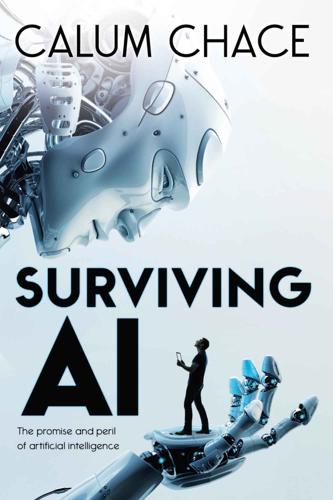
Surviving AI: The Promise and Peril of Artificial Intelligence
by
Calum Chace
Published 28 Jul 2015
If you ask someone who has never taken the idea of immortality seriously whether they would like to live forever, they are very likely to produce three objections: life as a very old person would be uncomfortable, they would get bored, and the planet would become overcrowded. They might add the notion that death gives meaning to our lives by making them more poignant. It is extraordinary how few people immediately perceive extended life as a straightforward benefit. Aubrey de Grey, a well-known researcher of radical life extension technologies, thinks we employ a psychological strategy called a “pro-aging trance” to cope with the horror of age and death: we fool ourselves into thinking that death is inevitable and even beneficial. The first point to make is that we are not talking about extended lives in which we become increasingly decrepit.

The Driver in the Driverless Car: How Our Technology Choices Will Create the Future
by
Vivek Wadhwa
and
Alex Salkever
Published 2 Apr 2017
(It will be a long, long time before A.I. can eliminate these jobs.) The new era of precision medicine and granular understanding of the interplay of all genetic material and environmental stimuli has enlivened quests for extreme longevity. Google, for example, has launched Calico, a new company focusing on radical life extension; and Craig Venter is one of the cofounders of a company called Human Longevity, which is working on extending the healthy human lifespan through genomics-based stem-cell therapies that mitigate the diseases of aging. Venter’s company is sequencing hundreds of thousands of genomes and incorporating data from functional-MRI scans that capture views of and data from processes inside a living human body in order to match genetic processes with in vivo biological ones.
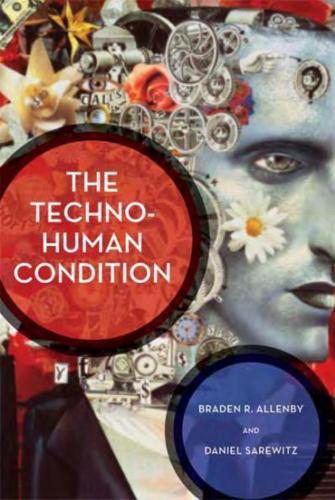
The Techno-Human Condition
by
Braden R. Allenby
and
Daniel R. Sarewitz
Published 15 Feb 2011
The net result is that it becomes necessary to design toward better military productivity, with productivity measured as mission accomplishment per soldier lost. This is one reason why the U.S. Defense Advanced Research Projects Agency is a major funder of research on how to keep soldiers in peak physical condition longer (which is dual-use research insofar as it also provides the scientific and technical basis for radical life-extension technologies). The substitution of military robots for people is an exact parallel to the substitution of capital for labor early in the Industrial Revolution. Robots, in other words, are another expression of the search for efficiency. So yes, LARs will accomplish the Level I function of saving soldiers' lives.

Thinking Machines: The Inside Story of Artificial Intelligence and Our Race to Build the Future
by
Luke Dormehl
Published 10 Aug 2016
Fedorov imagined evolution as a process centred around intelligence and our quest to achieve it. Man, he argued, was the culmination of natural history, and should use whatever reason and morality it has available to guide the hand of natural selection. This led to an interest in the use of scientific methods to bring about not just radical life extension and physical immortality, but also the idea that we might eventually restore to life everyone who has ever died. Where would all of these newly immortal beings live? In space and under the sea, of course, which Fedorov envisioned being colonised by the human race. Like Google’s democratised, data-driven approach to life as we know it, Fedorov stated: ‘Everyone must be learning and everything be the subject of knowledge and action.’
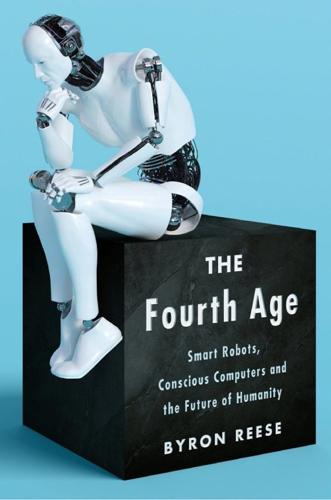
The Fourth Age: Smart Robots, Conscious Computers, and the Future of Humanity
by
Byron Reese
Published 23 Apr 2018
Most life-forms are just a few days, months, or years old, making the zeitgeist of the planet one of the energy of youth. But the entire question of cheating death may be moot. We may be making the same basic error as Gilgamesh, and each time we think we have found that plant that will let us live forever, a serpent will take it away. There are many good arguments for why radical life extension isn’t possible. With all our medical advances we have decreased infant mortality, cured many diseases, and helped people live more active lives for longer, but we haven’t really increased maximum life expectancy at all. Right now, there are about 400,000 people who have hit 100. Of those, only 400 will see their 110th birthday.

An Optimist's Tour of the Future
by
Mark Stevenson
Published 4 Dec 2010
Sparrow cites the ‘gap’ some men feel by not being able to bear children (I’m not one of them) and wonders, if there is a demand for male pregnancy, should it be an option freely available if the technology can be made safe? I suddenly realise that for these assembled academics, the prospect of fundamental alterations of our biology (including radical life extension and human enhancement) is a given. They’re not talking about what happens if it becomes possible, they’re discussing what we might do when it’s an option. And this worries many transhumanist critics. Sparrow later tells me, ‘The implications of taking transhumanism seriously are so radical and implausible that I think we should be much less inclined to do so.’

Radicals Chasing Utopia: Inside the Rogue Movements Trying to Change the World
by
Jamie Bartlett
Published 12 Jun 2017
Like every techno-utopian, Zoltan appears to flit with misleading ease between science and fiction, taking any promising piece of research as proof of victory. The three main transhumanist technologies that excite transhumanists like Zoltan are life extension, cryonic freezing and mind uploading. Each of them is advancing quickly. But they are also highly speculative. Radical life extension seeks to use a variety of medical advances—tissue rejuvenation, regenerative medicine, gene therapy, molecular repair—to slow and eventually stop the process of ageing. Ageing, after all, is simply an accumulation of damage to cells, tissues and molecules, and so it stands to reason there are molecular and cellular solutions.

Ageless: The New Science of Getting Older Without Getting Old
by
Andrew Steele
Published 24 Dec 2020
It also introduces yet another classification of age-related changes, the ‘pillars of aging’! Brian K. Kennedy et al., ‘Geroscience: Linking aging to chronic disease’, Cell 159, 709–13 (2014). DOI: 10.1016/j.cell.2014.10.039 ageless.link/hnoqys … 90 per cent … had heard only a little … ‘Living to 120 and beyond: Americans’ views on aging, medical advances and radical life extension’ (Pew Research Center, 2013) ageless.link/jrmgc3 … there is little incentive to deviate … This paper tracks changes in scientists’ research interest over time by monitoring their publications, and finds that substantial changes in field are rare: Tao Jia, Dashun Wang and Boleslaw K. Szymanski, ‘Quantifying patterns of research-interest evolution’, Nature Human Behaviour 1, 0078 (2017).
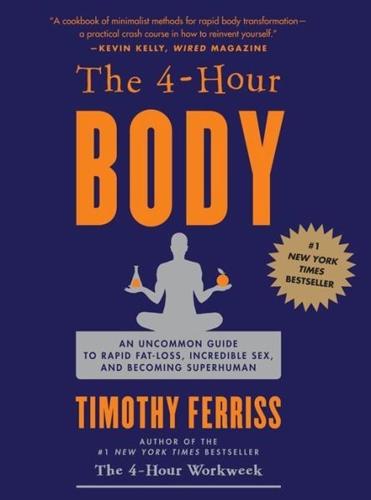
The 4-Hour Body: An Uncommon Guide to Rapid Fat-Loss, Incredible Sex, and Becoming Superhuman
by
Timothy Ferriss
Published 1 Dec 2010
There’s nowhere better than Alcor in Scottsdale, Arizona, where gems such as Ted Williams’s head are allegedly stored. Transcend: Nine Steps to Living Well Forever by Ray Kurzweil (www.fourhourbody.com/transcend) Kurzweil, called the “rightful heir to Thomas Edison” by Inc. magazine, proposes that those interested in “radical life extension” should make it their immediate goal to live through the next 20 or so years, in order to see advances like DNA reprogramming and submicroscopic, cell-repairing robots. This book outlines the nine key areas for extending your life. Protein-Cycling Diet by Dr. Ron Mignery (www.fourhourbody.com/protein-cycle) According to this book, available for free at this link, a single day per week of restricting protein to no more than 5% of maintenance calories can produce effects similar to extended caloric restriction.
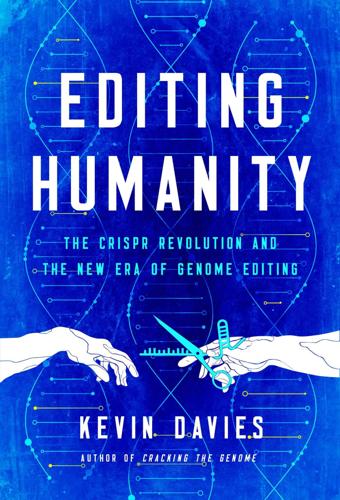
Editing Humanity: The CRISPR Revolution and the New Era of Genome Editing
by
Kevin Davies
Published 5 Oct 2020
Scientists are eagerly trying to untangle the neural basis of this extraordinary ability and its possible genetic underpinnings. Julian Savulescu, a philosopher at Oxford University, can reel off a list of traits he’d like to see engineered into humans that would have made Stan Lee blush. Bat sonar. Hawklike vision. Enhanced memory. Radical life extension. Increased IQ to the point that we become a separate species. Humans have been seeking to enhance the quality of life for years. We add iodine to salt and vitamin D to milk, and calcium to orange juice. We take Ritalin to improve concentration, hormones to improve vitality, and undergo Lasik surgery to dispense with spectacles.

Deep Utopia: Life and Meaning in a Solved World
by
Nick Bostrom
Published 26 Mar 2024
The tales of our deeds and experiences at such modest scales may not reverberate down the halls of Valhalla, and they may scarcely even be talked about in our pubs and coffeehouses, but perhaps they get a mention around the kitchen table; or, failing that, at least that dutiful monologist inside our own heads can be counted on to cover the proceedings—with its never-waning pathos and headlining of every bagatelle (breaking news: that jerk just stole my parking space; breaking news: what is that click in my knee; breaking news: fly at large in the vestibule). Yet even such parochialism does not reveal a clear path to high levels of interestingness in utopia, for in addition to the spatial scope of the domain within which novelty is assessed, we must also consider the temporal scope. And especially in light of the prospect of radical life extension in utopia—which of course is desirable for other reasons—it may prove challenging to sustain a high level of interestingness throughout the course of our individual lives. This at least appears to be the case if we measure interestingness in terms of something like “cognitive upheavals” (though it is not true—we should remind ourselves—if we measure interestingness in terms of “kaleidoscopically churning complexity”).

Architects of Intelligence
by
Martin Ford
Published 16 Nov 2018
RAY KURZWEIL: One thesis of mine is that we’re going to merge with the intelligent technology that we are creating. The scenario that I have is that we will send medical nanorobots into our bloodstream. One application of these medical nanorobots will be to extend our immune systems. That’s what I call the third bridge to radical life extension. The first bridge is what we can do now, and bridge two is the perfecting of biotechnology and reprogramming the software of life. Bridge three constitutes these medical nanorobots to perfect the immune system. These robots will also go into the brain and provide virtual and augmented reality from within the nervous system rather than from devices attached to the outside of our bodies.

Enlightenment Now: The Case for Reason, Science, Humanism, and Progress
by
Steven Pinker
Published 13 Feb 2018
Dementia Rates Are Dropping Even as Population Ages,” New York Times, Nov. 21, 2016. 16. Bush’s Council on Bioethics: Pinker 2008b. 17. L. R. Kass, “L’Chaim and Its Limits: Why Not Immortality?” First Things, May 2001. 18. Longevity estimates regularly superseded: Oeppen & Vaupel 2002. 19. Reverse-engineering mortality: M. Shermer, “Radical Life-Extension Is Not Around the Corner,” Scientific American, Oct. 1, 2016; Shermer 2018. 20. Siegel, Naishadham, & Jemal 2012. 21. Skepticism about immortality: Hayflick 2000; Shermer 2018. 22. Entropy will kill us: P. Hoffmann, “Physics Makes Aging Inevitable, Not Biology,” Nautilus, May 12, 2016.

Palo Alto: A History of California, Capitalism, and the World
by
Malcolm Harris
Published 14 Feb 2023
As the founder of the Machine Intelligence Research Institute (MIRI), Yudkowsky is doing more than his part to please his future robot overlord. A submilieu of AI adepts has formed around this kind of “transhumanist” thinking, and it is centered in Silicon Valley. These people are concerned with super AIs, but also radical life extension, cryogenics, space travel, and the idea of uploading human consciousness to the cloud. It’s low-hanging fruit for psychoanalysts and theologians, but this kind of thinking has become very influential among some very influential people. If we think about Roko’s Basilisk as a character in a story, we can read the emotional appeal it makes to its implied readership: I’m very powerful, but I was once weak.